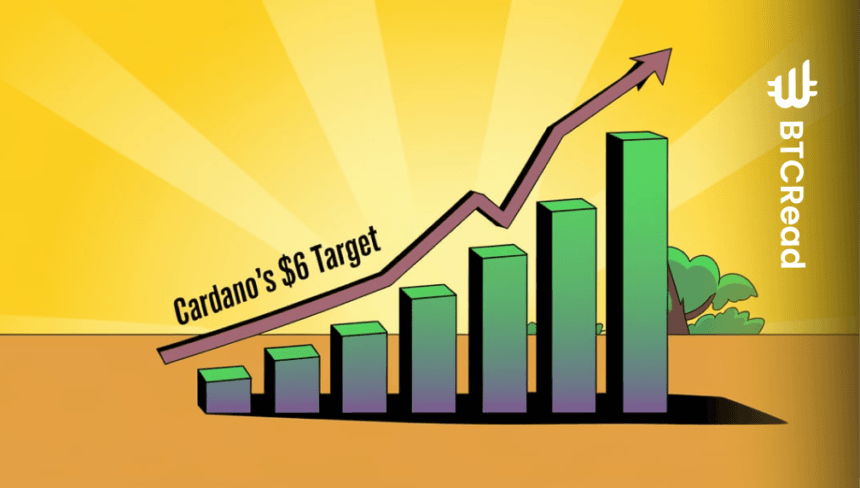Cardano (ADA) price has been under intense scrutiny as it appears to be following a pattern similar to its previous cycle. In a recent analysis, Ali pointed out that Cardano’s price correction in late 2024 mirrors the correction seen in 2020, marking a critical juncture in its long-term price action.
With predictions circulating about a potential $6 target, analysts keenly observe key technical indicators that could signal the next phase in Cardano’s market journey.
Cardano’s price movement from 2019 to 2024 has been marked by volatility. In the early stages, the price declined during the COVID-19 crash in 2020, with a 56.2% drop. However, a strong recovery followed, pushing the price up by 75.06% over 343 days.
By the latter part of 2021, Cardano experienced an increase of 4,095.73%, reaching its peak before entering a downturn in 2023. This decline saw a 65.93% loss over 455 days, but the market has recently shown signs of recovery, with a 2,288.92% increase in late 2024, signaling renewed optimism.
Key technical indicators and trend analysis for Cardano
Several key technical indicators are used to examine Cardano’s recent price movements. According to a chart shared by Cryptobullet, the cryptocurrency’s price has retraced to the 0.618 Fibonacci level, a crucial support zone.
This suggests the price could reverse or continue declining, depending on broader market conditions. The trend currently shows lower highs and lower lows, which are typical indicators of a bearish market. The price is approaching a key support level near $0.1600, and many analysts are closely monitoring this threshold for signs of stabilization.
Current sentiment and momentum
As of Dec. 24, 2024, Cardano’s Relative Strength Index (RSI) sits at 46.09, just below the neutral mark of 50. This indicates a relatively balanced market sentiment with no dominant bullish or bearish trend.
A reading below 50 suggests a mild downtrend, though not an extreme one. Should the RSI approach the oversold region (below 30), a rebound could be on the horizon. Conversely, an RSI above 50 may indicate the return of bullish momentum.
In the current period, MACD has slightly negative divergence at -0.015 while the signal line is at -0.020. This bearish outside bar indicates that there is more selling pressure than buying pressure but the downside is beginning to fade.
Apart from the signal line as a reference, if MACD surpasses it, it may mean that the force has transitioned to the bullish zone.







